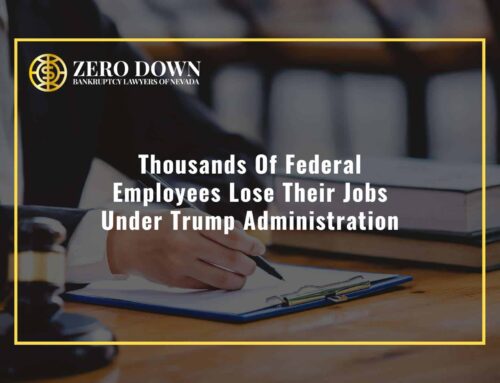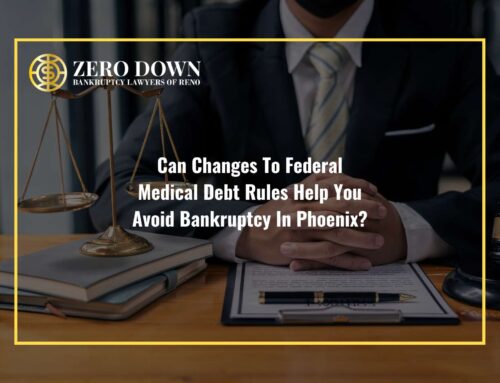You’ve probably heard of Chapter 7 bankruptcy, and maybe Chapter 13 and Chapter 11 bankruptcy as well. But unless you work in the bankruptcy industry, chances are you haven’t heard of a Chapter 20 bankruptcy. So what is Chapter 20 bankruptcy, and how can it suit your individual debt relief needs? Are you eligible to file, and what kinds of issues could arise in your potential case? If you’re considering declaring bankruptcy, you probably would like the answers to these questions and more. Self-research on the internet is a great start, but information about bankruptcy after hearing about your specific circumstances is even better. To schedule your free consultation, call 602-609-7000.
The Chapter 20 Approach: Sequential Chapter 7 & 13 Bankruptcies for Total Debt Resolution
One reason you may not have heard of Chapter 20 bankruptcy is that it technically doesn’t exist in the Bankruptcy Code. Chapter 20 is an informal term meant to represent when a bankruptcy debtor declares Chapter 13 bankruptcy after receiving a discharge from Chapter 7 bankruptcy. Chapter 7 bankruptcy may meet a debtor’s short-term needs without fulfilling their long-term financial goals. Chapter 13 bankruptcy may serve those long-term goals without providing the immediate relief that the debtor requires. Chapter 7 always comes first in a Chapter 20 debt relief situation. Some courts might even allow a debtor to file their Chapter 13 bankruptcy before the Chapter 7 bankruptcy is discharged..
Chapter 7 bankruptcy can clear many types of unsecured debts, as long as they don’t have priority status. The most common unsecured nonpriority debts are medical bills and credit cards, but this also includes personal loans, repossession deficiencies, unpaid utilities, and more. Some taxes can be discharged and others have priority status- this largely depends on whether the tax debt is recent or not. Chapter 7 bankruptcy is relatively fast and generally only lasts about 3 to 5 months from filing to discharge. For the most part, the debtor will be protected from creditors by the automatic stay until the case is discharged or dismissed. Clearing unsecured debts and activating the automatic stay is beneficial for a debtor whose creditors are about to collect. But Chapter 7 bankruptcy may only temporarily fix problems that are caused by secured debts such as a home mortgage or auto loan. A Chapter 7 bankruptcy debtor generally needs to reaffirm the loan on a secured debt or surrender the asset. The 3-5 month period that Chapter 7 lasts could be insufficient for the debtor to catch up on these expenses.
Chapter 13 bankruptcy, on the other hand, is designed to help a debtor catch up on payments to secured and priority debts that can’t be discharged by Chapter 7. Instead of lasting 3-5 months like Chapter 7, Chapter 13 bankruptcy lasts 3-5 years. A debtor with income that falls under the state median will have a 3-year payment plan, while a debtor whose income exceeds the state median will have a 5-year payment plan. The plan will pay off bankruptcy costs, secured debts, and priority debts. Unsecured nonpriority debts will be paid off based on how much disposable monthly income the debtor has left after paying mandatory debts. One of the unique benefits of Chapter 13 bankruptcy is the opportunity to strip a secondary home mortgage. This is possible when other liens take priority over the second mortgage so that the debtor doesn’t hold equity in the home. Without equity, a Chapter 13 bankruptcy transforms that secondary mortgage into an unsecured debt that will only be paid off in the plan as much as the debtor can reasonably afford.
Chapter 7 and Chapter 13 offer distinct legal and financial benefits. While a debtor may benefit from both, there is a reason you won’t see a Chapter 20 bankruptcy filed as a Chapter 13 before a Chapter 7. Any unsecured nonpriority debts that the debtor can’t afford to pay off in a Chapter 13 payment plan are discharged at the end of the plan. This would leave no other debts to be discharged by a Chapter 7 bankruptcy filing. Filing for bankruptcy twice in short succession can come with complications that cause delays and extra expenses. Strategize your Chapter 20 bankruptcy with a law team that is experienced in any combination of consumer bankruptcy. For your free consultation with a member of the bankruptcy team, call 602-609-7000.
Examples Of When a Debtor May Benefit From Chapter 20 Bankruptcy
Chapter 20 bankruptcy, a strategy involving sequential Chapter 7 and Chapter 13 filings, can be beneficial in specific financial situations. This approach allows debtors to address a range of debts by first eliminating certain obligations under Chapter 7, and then restructuring remaining debts under Chapter 13. It’s particularly useful for complex cases where a single type of bankruptcy filing is insufficient. Here are some scenarios illustrating its potential advantages:
- A debtor hasn’t been able to afford their home mortgage due to credit cards and interest from other unsecured debts. They know they could lose their home to foreclosure, but can’t afford the mortgage and unsecured debts at the same time. Additionally, paying the monthly mortgage plus the balance in arrears can be burdensome, especially if the lender is inflexible with payment arrangements. A bankruptcy attorney might advise this debtor to first declare Chapter 7 bankruptcy. This will clear the debtor’s credit cards and other unsecured debts that have been eating away at their monthly budget. Next, the debtor declares Chapter 13 bankruptcy. This spreads out their mortgage balance in arrears and safeguards the home from foreclosure until the bankruptcy is complete.
- A debtor has nearly $2,000,000 in debts, many of which are unsecured. This exceeds the Chapter 13 debt limitation of $1,395,875, so the debtor would be ineligible for relief under Chapter 13. However, the debtor would still benefit from the extended payments for secured debts and protection from creditors that a Chapter 13 bankruptcy provides. Here, the debtor might first declare Chapter 7 bankruptcy to erase their unsecured nonpriority debts. Depending on their debt structure, this may be sufficient to bring their overall balance under the Chapter 13 debt restrictions. After the Chapter 7 case has been discharged, the debtor can file their Chapter 13 petition to begin a payment plan on their secured and priority debts.
- A debtor is struggling with monthly expenses and has taken out a second mortgage on their home which they desperately want to keep. The debtor suffers an unexpected medical emergency which, despite having healthcare coverage, creates significant debt. It may benefit the debtor to first declare Chapter 7 bankruptcy to clear medical debt before filing for Chapter 13 bankruptcy to clear the secondary mortgage on their home.
Take Back Control Of Your Financial Situation With Bankruptcy
Most of the time, debt creeps up on you over the years rather than occurring all at once in a single day. Similarly, it can take time to manage debts and regain control of your finances. While a significant endeavor, Chapter 20 bankruptcy can help you save secured assets and pay off as few unsecured debts as possible. Find relief from your creditors and create a financial future that you can look forward to. Arizona Zero Down Bankruptcy will simplify your case during each step of the process. You may even qualify to file your case for no money down. Contact us to get started today with your free consultation, or call 602-609-7000.
Arizona Offices
Phoenix Location:
343 W Roosevelt Street, Suite #100
Phoenix, AZ 85003
Email: [email protected]
Phone: 602-609-7000
Mesa Location:
1731 West Baseline Rd., Suite 101
Mesa, AZ 85202
Email: [email protected]
Glendale Location:
20325 N 51st Avenue, Suite #134
Glendale, AZ 85308
Email: [email protected]
Tucson Location:
2 East Congress, Suite #900
Tucson, AZ 85701
Email: [email protected]











